“Mantella insularis: An adventurous naturalist’s frog prince!”
A new species of mantellid frog has been described by a naturalist Dr. Athena Charles Wallace at Nosy Mangabe, an uninhabited island in Madagascar.
. . .
From brightly coloured frogs to iridescent-coated oysters, new species are discovered and described every day! This process of analysing whether an organism is different enough from its kin to be described as a separate species involves a meticulous procedure with several lines of evidence that need to be ticked off the list. Here’s a fictional first-hand account of how a British naturalist Athena Charles Wallace explores, discovers, studies and describes a new, exotic species of frog in Nosy Mangabe, Madagascar.
Disclaimer: This article has been written in a manner that mimics how naturalists in the past have been characterising new species. All characters mentioned, including the frog species Mantella insularis are entirely fictional and have been created only for educational purposes. The sole purpose of this article is to give an insider’s perspective and educate the reader about how a new species is characterised and described.
. . .
May 31 2003,
Dear Diary,
I finally got my research permit! 6 months of waiting has finally paid off, and I can officially collect, transport and test amphibian specimens from Madagascar!
I’m pasting a page here to remember where it all started. This article was quite the treasure trove for me, and the prospect of the probable existence of a new species of frog, was exciting beyond measure! Following up with the existing literature I realised that the number of exotic species described from Madagascar was very low, and being an avid naturalist with taxonomy running through my veins (quite literally), I decided to change that.
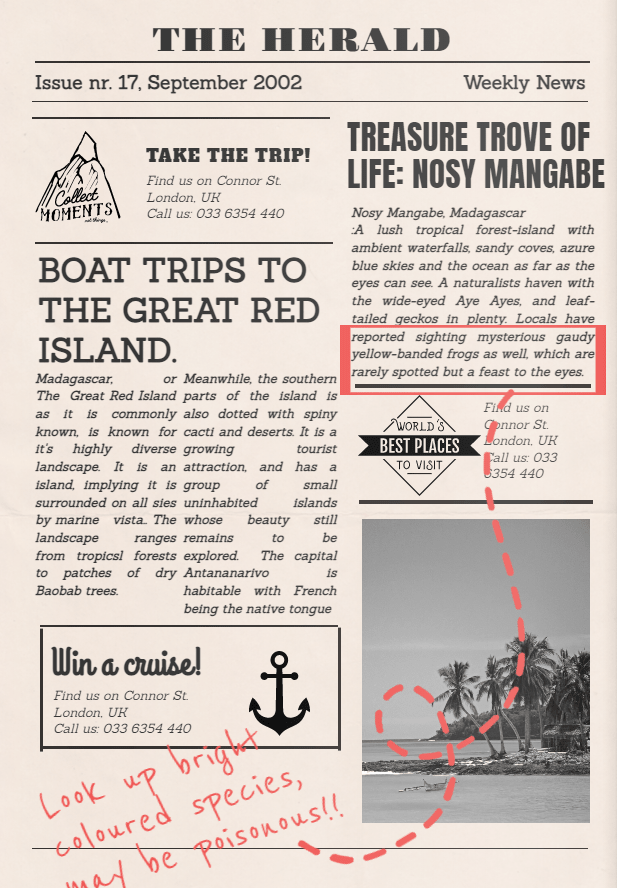
The first step was to apply for a permit that would officially allow me to catch, transport and examine amphibian specimens from Madagascar. The process of applying for the permit was definitely hectic, but it’s a step that no researcher can afford to skip. After one Yellow fever vaccine, an investment of a few thousand pounds (profusely thankful to the Natural History Museum for covering the expenses), a week-long trip to Madagascar, a ton of paperwork and the help of a Malagasy graduate student from my lab, I finally earned my research permit from the Ministry of Higher Education and Scientific Research at Madagascar. That’s all for today, will keep you posted!
Love,
Athena C Wallace
. . .
26th August 2003
Dear Diary,
It’s been 12 days since we landed in Madagascar and we’ve spotted several rare beauties! After submitting the required documents and making quite a spectacle of the fact that I had a research permit, my Graduate student Masina, and I packed in some essentials and joined a local fisherman who offered to take us on his boat to Nosy Mangabe. Before imagination takes you elsewhere, let me tell you that “Nossi” means “Big” in Malagasy language, and ‘Nosy Mangabe’ essentially translates to ‘Big Island’. Mangabe is an uninhabited island, but has campsites and toilets for tourists who plan for an overnight stay.
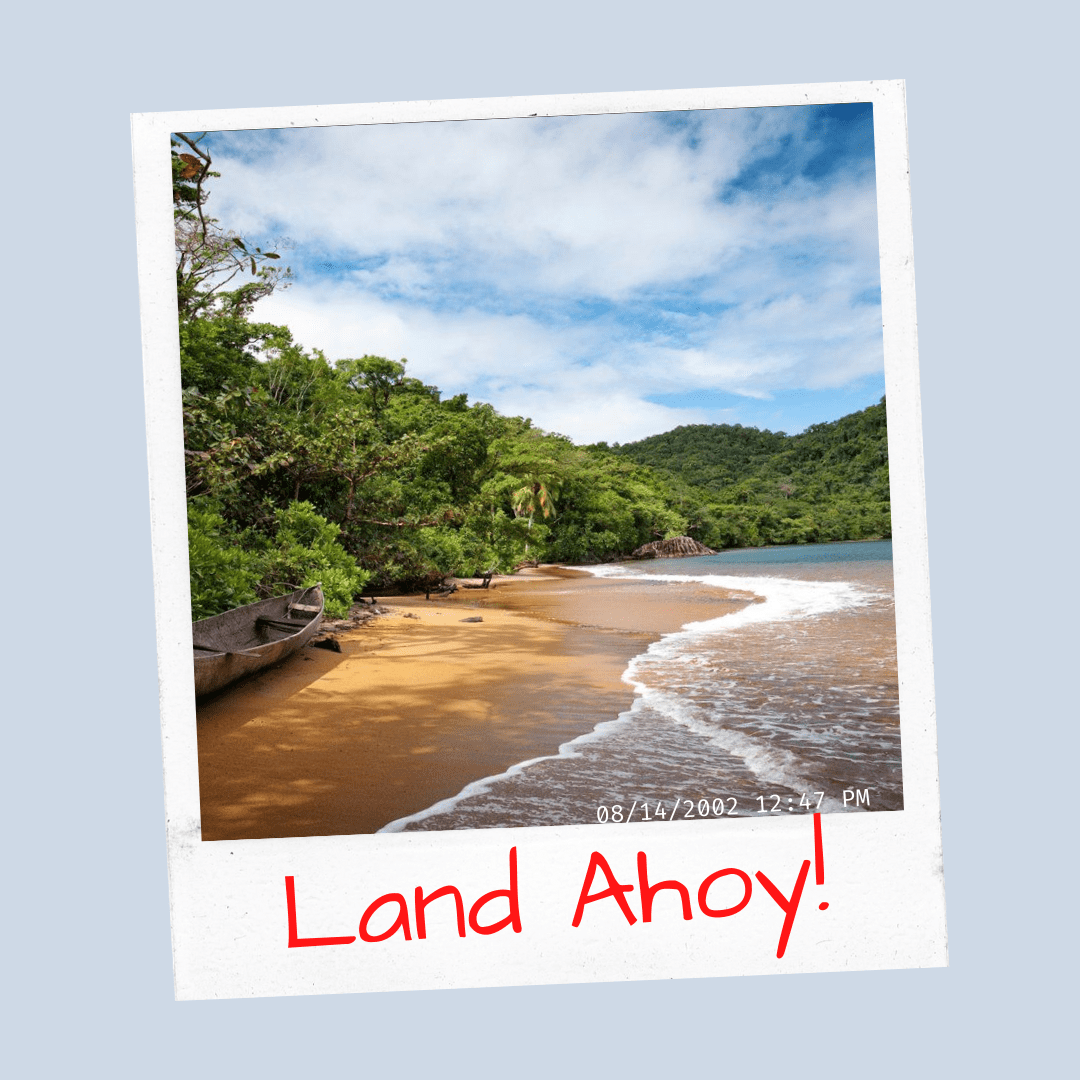
The island in itself is picture-perfect with the blue ocean, golden beach and the green forest laying the perfect premise for a romantic vacation…one that I had planned on spending in search of my new special someone- the yellow-banded frog from the newspaper article.
The hide and seek game didn’t last very long. With some help from the localite who had seen the frog several times before, we found the little fellow. It was a male, distinguished by its smaller size and absence of nuptial glands. These frogs mainly feed on ants and termites. Over the course one week, we were able to identify and collect 7 specimens, 3 female and 4 male, which were morphologically distinct from the existing Mantella species in the region.
So as tradition goes, the first line of evidence I would need, to find out whether these frogs in fact belonged to a new species would be based on their behaviour and appearance. I’ve sketched out it’s appearance in the best way I can. We shall be capturing pictures of each specimen at the lab in London, but this was a rough sketch to give an idea about the morphological aspects of the frog. We even took down detailed body measurements, much like those taken by the tailor,and calculated an average value for both males and females. Other minute details such as analysis of the poisonous alkaloids in the skin will be studied in the lab again.
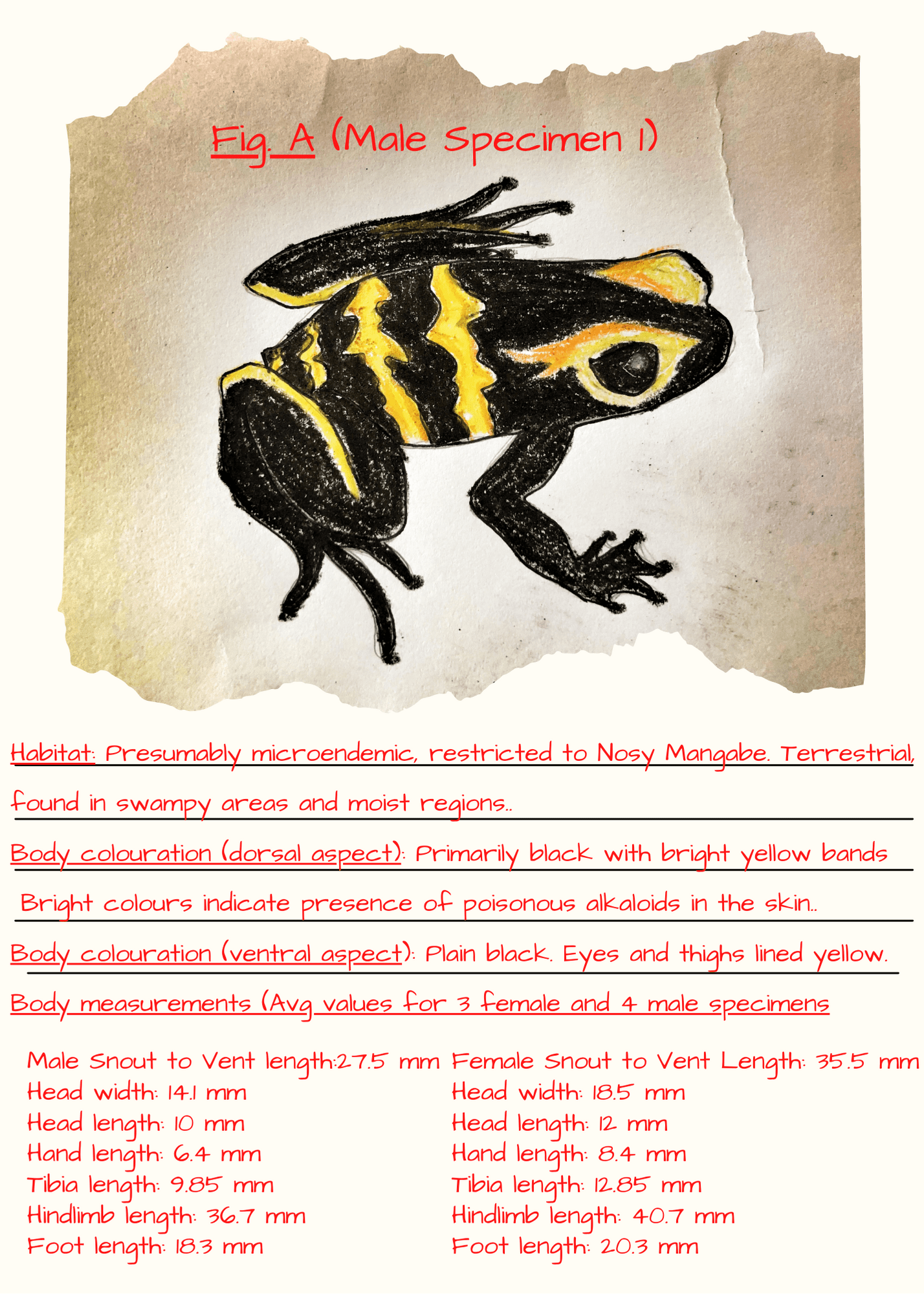
Based on my knowledge of existing literature, specifically on the work done by German herpetologist and evolutionary biologist Dr. Miguel Vences, and comparison of that with my observations on the field, I strongly believe that this frog belongs to the genus Mantella. However, I will only be able to conclude that after carrying out a few more studies back home.
Looks like my little Malagasy vacation is coming to an end now. We have collected enough specimens and information about the place, and shall be sailing back to London in 2 days. Next in line is work that is slightly monotonous but exciting nonetheless, but more on that next time!
Love,
Athena Charles Wallace
. . .
September 17th 2003
Dear Diary,
I’m writing to you from my lab today, home sweet home! Today we sent tissue samples from our specimens for genetic analysis. The samples will be sequenced for the mitochondrial 16s rRNA gene in 2 (1 male and 1 female) specimens. Since we don’t yet have a concrete definition of the word “species” itself, there are no certified criteria that a specimen has to meet in order to be declared a new species. However, as I have mentioned before as well, it must satisfy certain lines of evidence that can prove that it does not belong to the existing taxa. Arguably, the best way to find differences between two organisms is by comparing their genetic makeup, and that’s what we are looking forward to doing now. Of course, sequencing the entire genome for each specimen is very far fetched. Instead, the gold standard is to sequence for ~1130bp of the 16s ribosomal RNA gene which is highly conserved among all organisms. It has conserved and variable regions, and the differences found in these variable regions will be our map to victory!
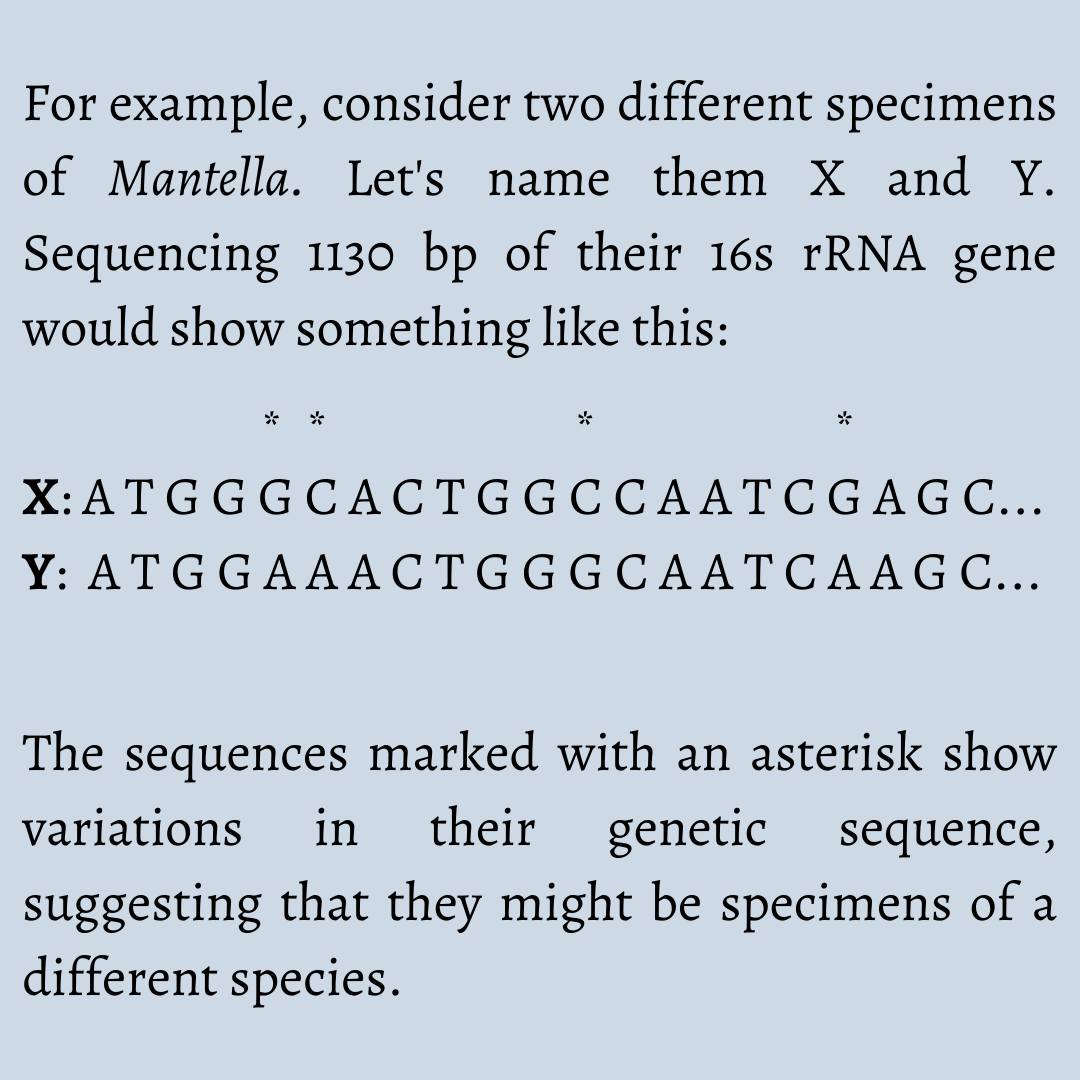
Once the genetic sequencing is complete, we will move on to distance analysis, where these differences between the genetic sequences are expressed as distance. So we come to the next line of evidence – the “P-distance”.
Distance analysis compares two aligned sequences at a time, and calculates the proportion of sequence pairs that are different. While comparing a pair of sequences, it chooses the differences (which could be gene deletions/insertions/nucleotide substitutions) and represents them as a proportion of the whole sequence. Hence, it is called Pairwise Distance.
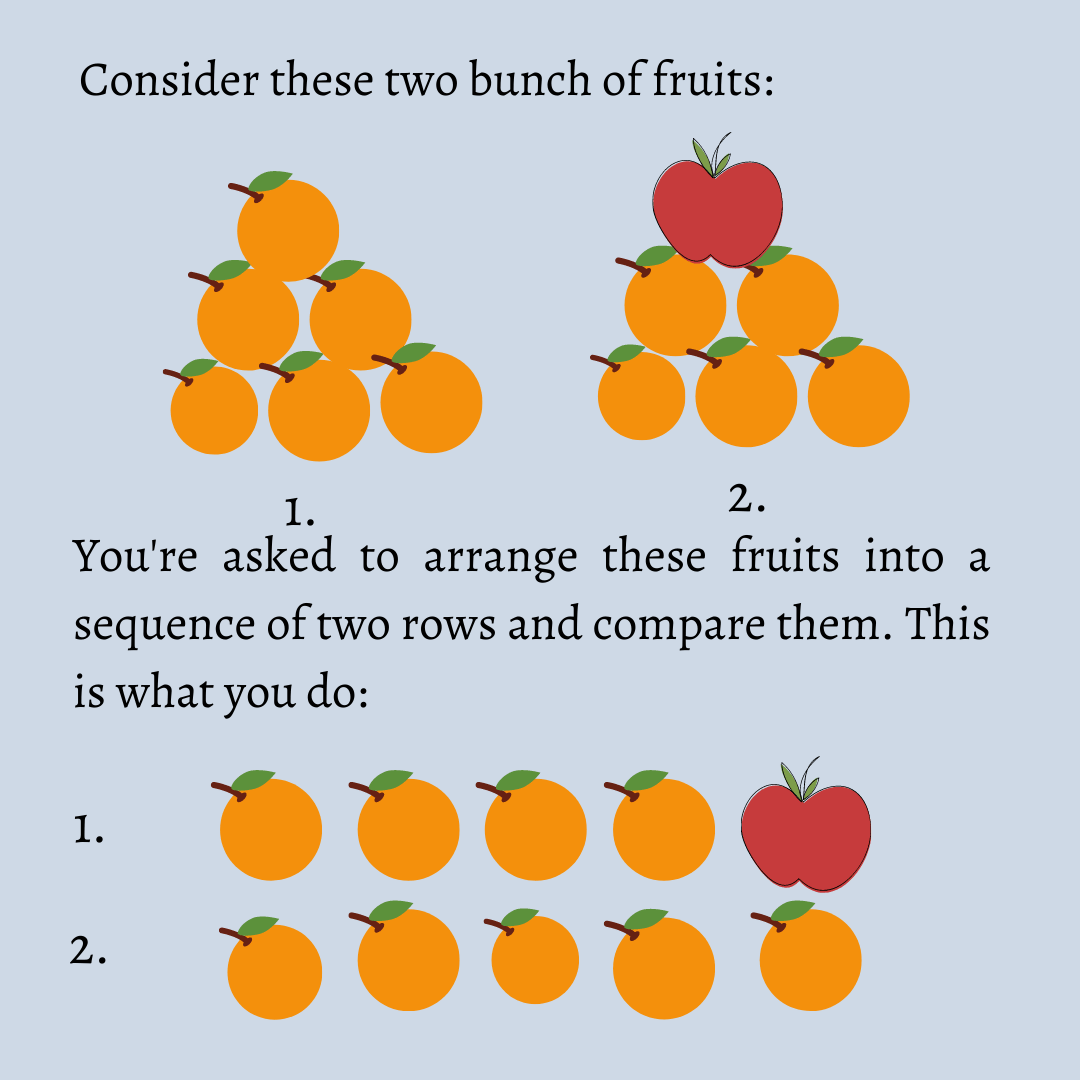
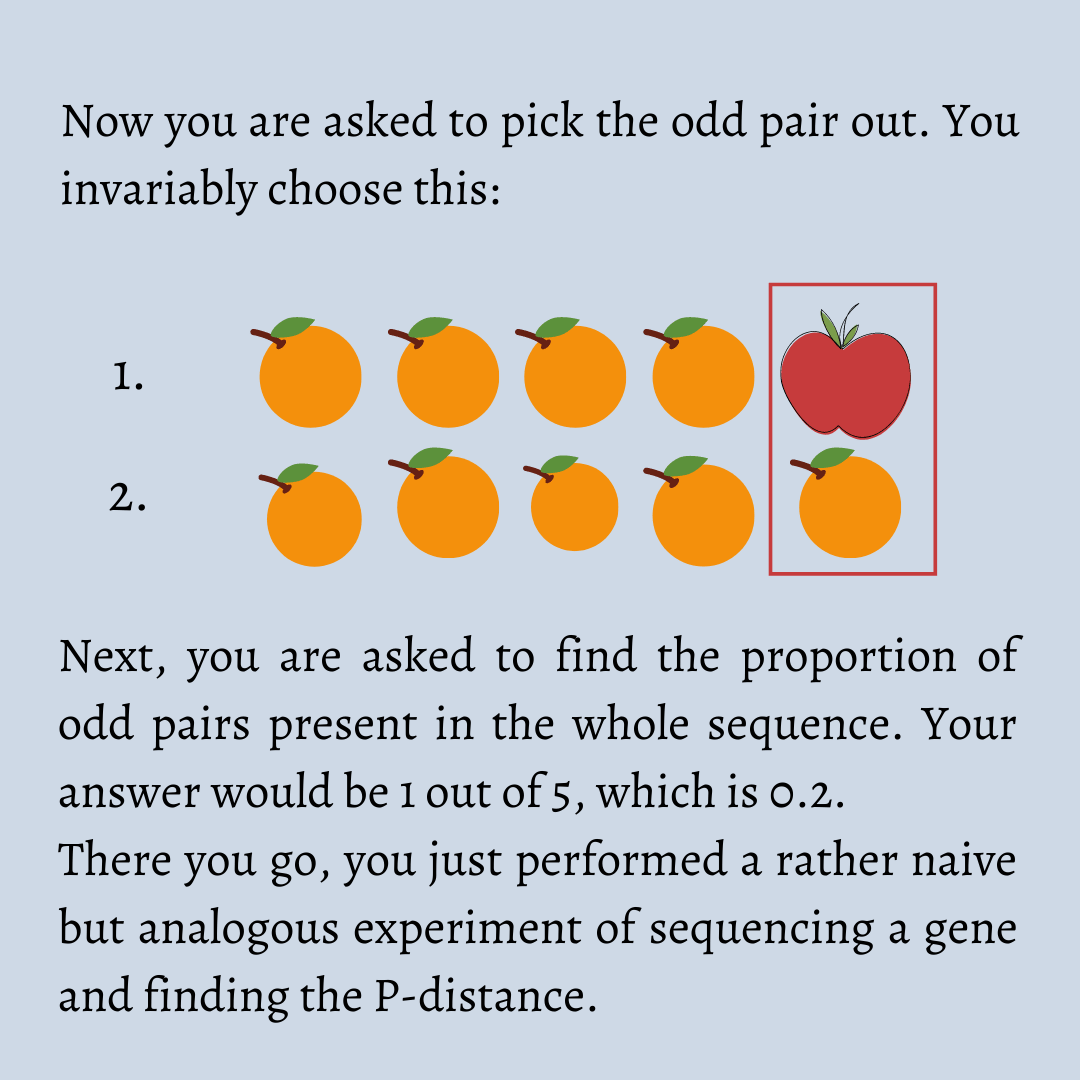
From here, there are several routes that can be taken to analyse the aligned sequences- Maximum Likelihood analysis, Parsimony analysis, Bayesian statistics and the lots. But that agreeably sounds like Greek and Latin and would take an entire novel’s worth of diary entries to be able to explain. Hence, I shall stop here for today, and talk about the results once I finish performing them myself.
Love,
Athena Charles Wallace
. . .
1 January 2004
Dear Diary,
Mark the date, because this is the day I dreamt about 2 years ago while reading that newspaper article…I completed the phylogenetic analysis of the specimens and it mapped out into a beautiful tree that I shall be pasting here as well.

Mantella insularis sp. nov. is what I decided on naming it, the etymology being based on the fact that it was found on an island. Based on raw genetic distance, Mantella insularis sp.nov. is genetically different from the congeners by 3.8-6.5%. There was no intraspecific distance between both of the specimens of Mantella insularis sp. nov. We tested for the presence of poisonous alkaloids and the results justified what we had found through the phylogenetic tree, as the compounds were very similar to the ones found in M. madagascariensis. With all the statistical analysis complete, and a perfect fit in the phylogenetic tree, the only step remaining is to write it all up and send it out for publishing in a good journal, preferably from the Natural History Museum itself. It’s been an unforgettable journey I must say, right from the chance discovery of the newspaper article, to the Madagascar trip to pairing up nucleotides only to compare the differences between them. It appears like a monotonous and thankless job to many, but to a naturalist like me, it’s worth a lot more than a few promotions and pay raises. It’s what I love, and being the kin of a legendary naturalist like Alfred Russel Wallace, it’s something I believe I’m born to do.
Love,
Athena Charles Wallace
. . .
Writer and Illustrator

Anushree Krishnamurthy
Co-founder and Director of Website and Logistics


Just loved it! Must say, the amount of effort the author has put to simplify the dreadful jargons is definitely much more than it is evident here.
Thank you so much! Definitely a great validation to our efforts 😀